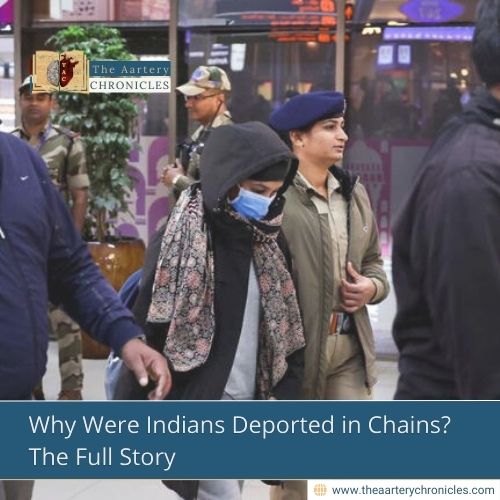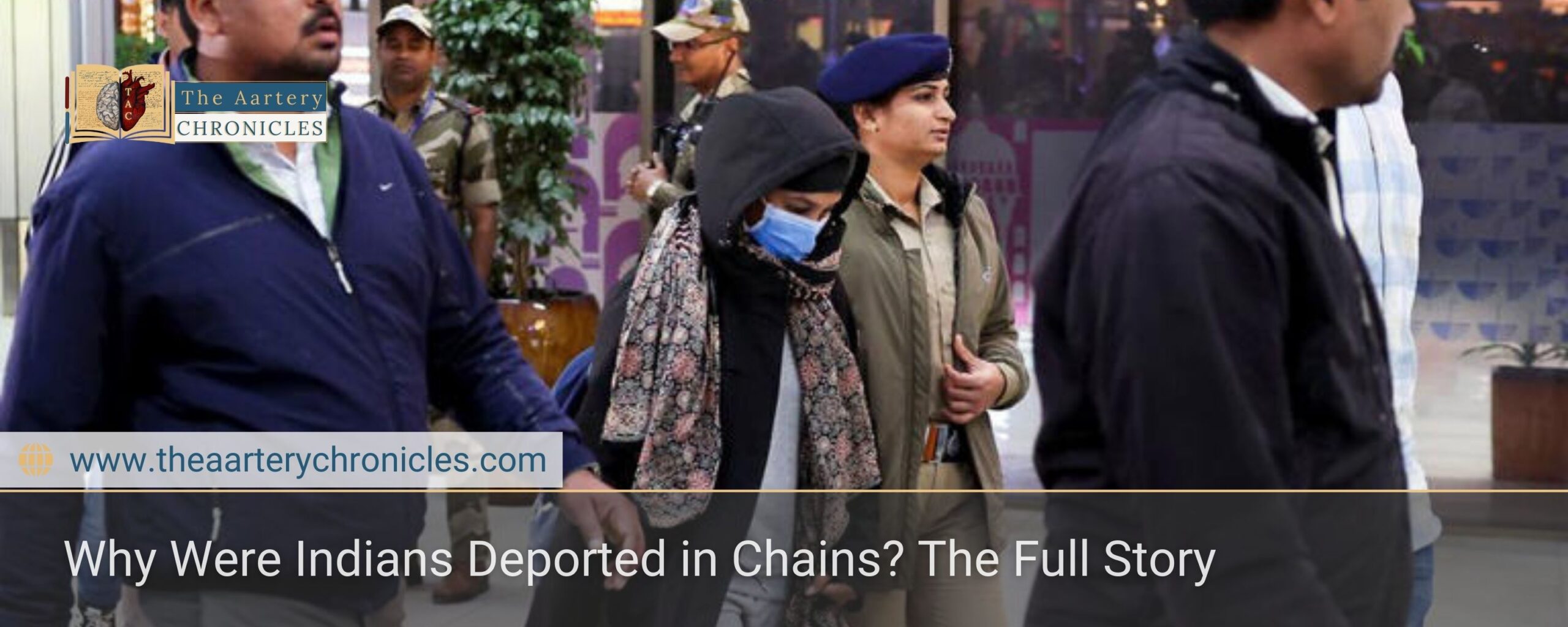

Why Were Indians Deported in Chains? The Full Story
The recent deportation of 104 Indian nationals from the United States has sparked significant public and political debate in India. The images of deportees in handcuffs and leg restraints led to widespread outrage, even causing disruptions in Parliament. This reaction largely stems from the differing legal perspectives on the use of restraints in the U.S. and India.
Why Were Indians Deported?
The deportation of these individuals is part of the U.S. government’s strict immigration policies aimed at cracking down on illegal immigration. The deportees were flown back to India on February 5, and while this was not an unprecedented action, the use of restraints triggered strong reactions in India.
Political Reactions in India
Several opposition leaders, including Congress members, publicly condemned the use of handcuffs. Some MPs even wore symbolic handcuffs in Parliament to highlight what they called the “humiliation” of Indian nationals. Congress leader Pawan Khera described the images as deeply saddening, while Gaurav Gogoi criticized how the deportation was conducted.
However, not everyone agrees with these views. Some social media users questioned the uproar, arguing that those who entered the U.S. illegally should accept the consequences.
Government Response
External Affairs Minister S. Jaishankar addressed Parliament on the issue, explaining that the use of handcuffs was a part of the U.S. Immigration and Customs Enforcement (ICE) standard procedure for deportations. He reassured the public that women and children were not restrained, and deportees were temporarily unshackled when necessary, such as for toilet breaks.
U.S. Law on Handcuffing During Deportation
In the U.S., the use of handcuffs is a standard safety measure during deportation. Law enforcement officers routinely handcuff individuals under arrest, regardless of the severity of their offense. Even during investigative detentions, handcuffs may be used if officers deem it necessary for safety.
The 1989 Supreme Court ruling in Graham v. Connor established that police use of force, including handcuffing, must follow an “objective reasonableness” standard. This means that while handcuffs are allowed, their use must not be excessive or unjustified.
India's Legal Approach to Handcuffing
In contrast, India follows a much stricter approach regarding the use of handcuffs. The Supreme Court has ruled in multiple cases that handcuffing is a violation of fundamental rights unless there is a clear and documented risk of escape or violence.
Key rulings include:
- Prem Shankar Shukla v. Delhi Administration (1980) – The Supreme Court declared handcuffing to be inhuman and unreasonable unless justified with valid evidence.
- Sunil Batra v. Delhi Administration (1978) – The court emphasized that handcuffing must not degrade a person’s dignity and must be legally justified.
Under Indian law, police must obtain prior permission from a magistrate before handcuffing an undertrial prisoner. Any unauthorized use of handcuffs can lead to legal consequences for law enforcement officers.
Recent Legal Changes in India
With the introduction of the Bharatiya Nagarik Suraksha Sanhita (BNSS), Section 43 now grants police officers statutory authority to handcuff an accused person while making an arrest. This marks a shift in India’s approach but still differs significantly from U.S. practices.
Conclusion
The strong reaction in India to the deportation images is largely due to the stark differences in legal approaches to handcuffing between the U.S. and India. While the U.S. considers restraints a routine safety measure, Indian law prioritizes personal dignity and restricts their use. Understanding these differences helps contextualize the ongoing debate and political discourse surrounding the issue.
Source: Inputs from various media Sources

Priya Bairagi
Reviewed by Dr Aarti Nehra (MBBS, MMST)
I’m a pharmacist with a strong background in health sciences. I hold a BSc from Delhi University and a pharmacy degree from PDM University. I write articles and daily health news while interviewing doctors to bring you the latest insights. In my free time, you’ll find me at the gym or lost in a sci-fi novel.








